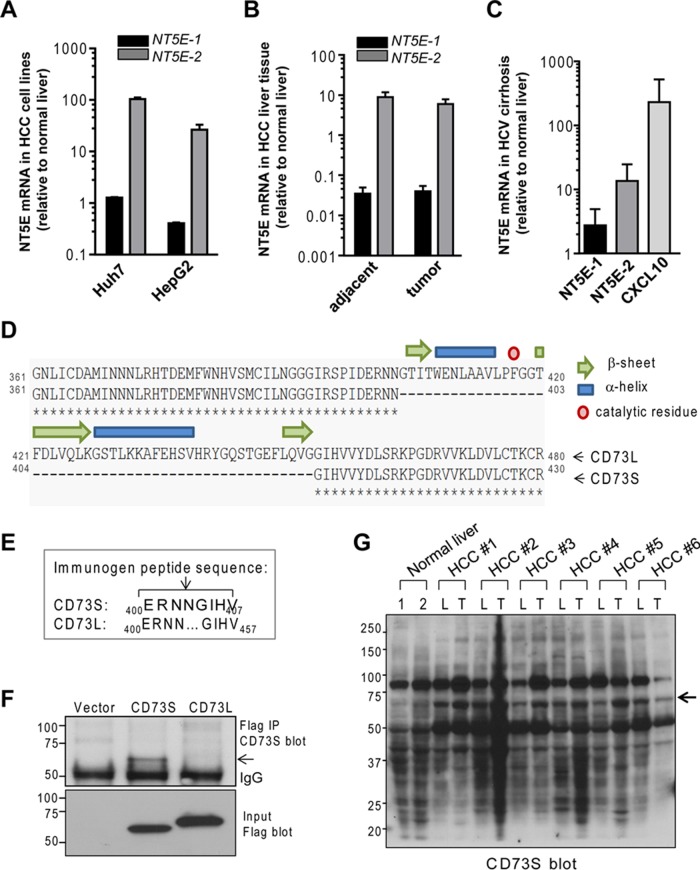FIGURE 3:
NT5E-2 is up-regulated in cirrhosis, and HCC and encodes a shorter CD73 protein (CD73S), which is functionally distinct from canonical CD73 (CD73L). (A–C) Relative expression of NT5E-1 and NT5E-2 mRNA in HCC cell lines (A), tumors and adjacent nontumor tissue from HCC surgical specimen obtained from six patients (B), and biopsies from patients with HCV-associated cirrhosis of the liver (C; clinical information on the human HCC and cirrhosis samples provided in Supplemental Table S2). CXCL10 is included as a positive control for HCV cirrhosis samples (Brownell and Polyak, 2013). (D) Protein sequence alignment of the C-termini of CD73L (NP_002517) and CD73S (NP_001191742). The 50 residues (404–453) missing in CD73S form three β-strands and two α-helices and include a catalytic residue (Phe-417). (E) Sequence of the synthetic peptide (ERNNGIHV) used to generate rabbit anti-CD73S antibodies. (F) Detection of total Flag-CD73S and Flag-CD73L protein (bottom) and validation of the CD73S antibody reactivity in Flag immunoprecipitates of transfected HEK293T cell lysates. CD73S and CD73L have predicted molecular weight of 58 and 63 kDa, respectively, but migrate at ∼67 and ∼72 kDa because of glycosylation and the Flag tag. (G) CD73S immunoblot of total tissue lysates from two normal human livers (1, 2) and six HCC paired tumors (T) and adjacent uninvolved liver (L) tissues (HCC 1–6; same as those used in B).

